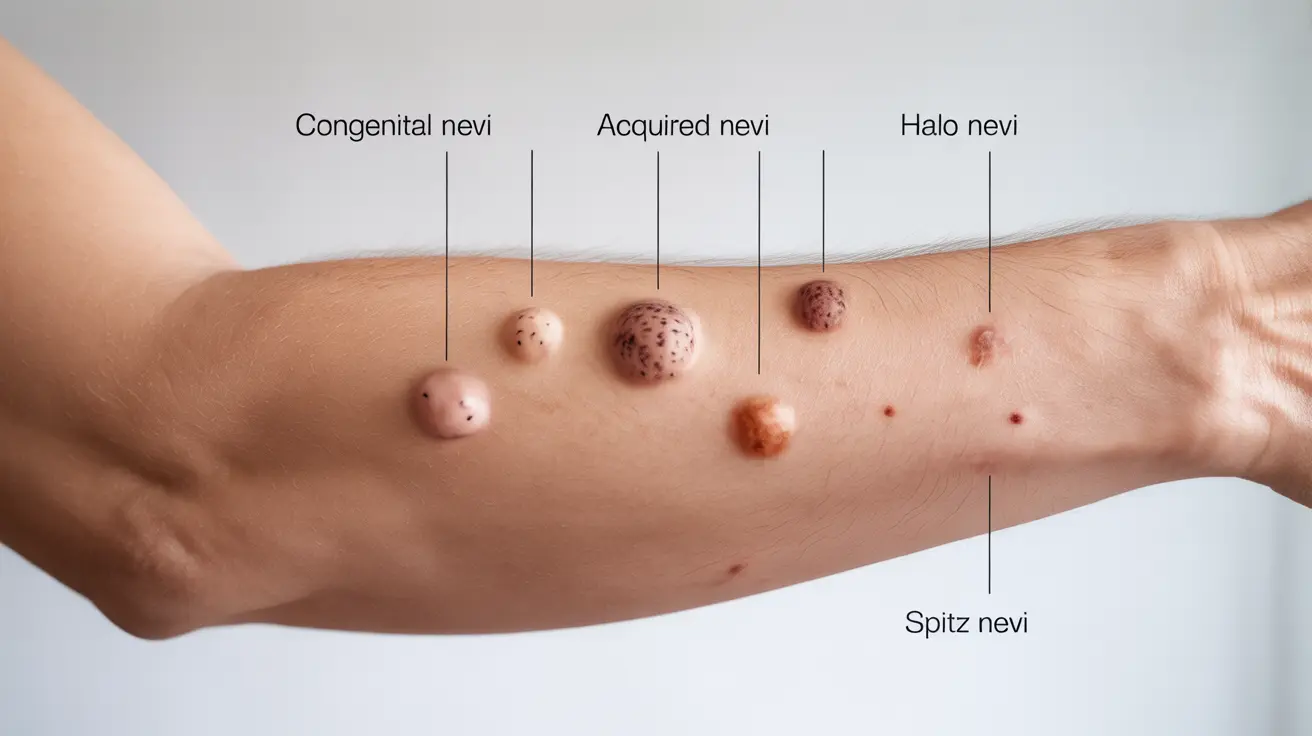As a parent, noticing a mole on your baby's skin can naturally raise concerns. While most baby moles are completely harmless, understanding what's normal and what requires medical attention is crucial for your child's health and your peace of mind.
Baby moles, also known as melanocytic nevi, are common skin features that can appear at birth or develop during early childhood. This comprehensive guide will help you understand when to relax and when to seek professional medical evaluation.
Types of Baby Moles and When They Appear
Baby moles generally fall into three main categories:
- Congenital nevi (present at birth)
- Acquired nevi (developing after birth)
- Special types (such as halo or spitz nevi)
Most moles that appear during infancy and early childhood are acquired nevi, which typically begin showing up after 6 months of age. These are usually small, round, and uniform in color.
Normal Characteristics of Baby Moles
Healthy baby moles typically share several common characteristics:
- Symmetrical shape
- Even coloring (usually light to dark brown)
- Clear, well-defined borders
- Small size (usually less than 6mm across)
- Smooth or slightly raised surface
It's important to note that normal moles can grow proportionally as your child grows, but this growth should be gradual and consistent.
Warning Signs to Watch For
While most baby moles are harmless, certain characteristics warrant prompt medical attention. Use the ABCDE rule to monitor your baby's moles:
- Asymmetry: One half doesn't match the other
- Border: Irregular, ragged, or blurred edges
- Color: Multiple colors or unusual shades
- Diameter: Larger than 6mm (pencil eraser size)
- Evolution: Changes in size, shape, or color
Monitoring and Documentation
Establishing good monitoring practices can help you track any changes in your baby's moles:
- Take clear photos of concerning moles
- Measure moles using a ruler or reference object
- Document any changes in a health diary
- Schedule regular pediatric check-ups
Prevention and Protection
While you can't prevent all moles from forming, you can take steps to protect your baby's skin:
- Use broad-spectrum sunscreen (for babies over 6 months)
- Keep babies under 6 months out of direct sunlight
- Dress your baby in protective clothing
- Use hats and seek shade during peak sun hours
Frequently Asked Questions
When should I be concerned about a mole on my baby and see a doctor?
Seek medical attention if you notice any of the ABCDE warning signs: asymmetry, irregular borders, color variations, diameter larger than 6mm, or evolution in appearance. Also consult a doctor if the mole bleeds, itches, or becomes painful.
What are the signs that a baby mole could be cancerous or melanoma?
While melanoma is extremely rare in babies, warning signs include rapid growth, irregular shapes, multiple colors within one mole, bleeding or crusting, and any mole that looks significantly different from others (the "ugly duckling" sign).
Can baby moles change in size or color as the child grows and still be normal?
Yes, it's normal for moles to grow proportionally as your child grows, and some moles may become slightly darker or lighter over time. However, sudden or dramatic changes should be evaluated by a healthcare provider.
How are baby moles diagnosed and treated if they look unusual?
Diagnosis typically involves a thorough visual examination by a dermatologist or pediatrician. If concerns exist, they may perform a biopsy. Treatment options range from monitoring to surgical removal, depending on the assessment results.
Are large or numerous moles in babies linked to higher health risks?
Babies with multiple large moles or more than 50 small moles may have a slightly higher risk of developing skin problems later in life. These children should be monitored more closely and receive regular dermatological check-ups.




